Recombinant Human CEACAM5 protein, Fc-His-tagged, R-PE labeled
| Cat.No. : | CEACAM5-665HP |
| Product Overview : | Recombinant Human CEACAM5 protein, Fc-His-tagged was Conjugated with NH2-Reactive R-PE(R-Phycoerythrin). |
| Availability | April 19, 2025 |
| Unit | |
| Price | |
| Qty |
- Specification
- Gene Information
- Related Products
- Case Study
- Application
- Download
| Species : | Human |
| Source : | HEK293 |
| Tag : | Fc&His |
| Description : | NH2-Reactive R-Phycoerythrin is used for antibody conjugation for immunostaining and cellular proteins for tracing. NH2-Reactive R-Phycoerythrin has succinimidyl ester groups, and can easily make a covalent bond with amino groups of protein without any activation process. |
| Form : | Liquid in sterile PBS buffer pH 7.4 (may contains tiny amount of reaction buffer and R-Phycoerythrin). |
| Endotoxin : | <1EU/ug by LAL method. |
| Stability : | Sample is stable for at least 12 months when stored at -20 to -80°C from date of manufacture. For longer storage, add equal volume of glycerol to the sample solution and store at -20 to -80°C. |
| Storage : | Store under sterile conditions at -20 to -80°C immediately after receipt. It is recommended that the protein be aliquoted for optimal storage. Avoid freeze-thaw cycles. |
| Related Product : | CEACAM5-665H |
| Official Symbol | CEACAM5 |
| Synonyms | CEACAM5; carcinoembryonic antigen-related cell adhesion molecule 5; CEA; CD66e; meconium antigen 100; DKFZp781M2392; |
| ◆ Recombinant Proteins | ||
| CEACAM5-733H | Recombinant Human CEACAM5 Protein, His-tagged | +Inquiry |
| CEACAM5-87HB | Active Recombinant Human CEACAM5 protein, His-Avi-tagged, Biotinylated | +Inquiry |
| CEACAM5-2570H | Recombinant Human CEACAM5 protein(35-685 aa), N-MBP & C-His-tagged | +Inquiry |
| CEACAM5-1025C | Recombinant Cynomolgus CEACAM5 Protein (Met1-Ala688), His-tagged | +Inquiry |
| CEACAM5-3200HAF488 | Recombinant Human CEACAM5 Protein, His-tagged, Alexa Fluor 488 conjugated | +Inquiry |
| ◆ Native Proteins | ||
| CEACAM5-27803TH | Native Human CEACAM5 | +Inquiry |
| ◆ Cell & Tissue Lysates | ||
| CEACAM5-2238HCL | Recombinant Human CEACAM5 cell lysate | +Inquiry |
Case 1: Ye M, et al. FASEB J. 2024
Exosomes play significant roles in the communications between tumor cells and tumor microenvironment. However, the specific mechanisms by which exosomes modulate tumor development under hypoxia in pancreatic neuroendocrine tumors (pNETs) are not well understood. In this study, hypoxic exosomes derived from pNETs cells can activate tumor-associated macrophages (TAM) to the M2 phenotype, in turn, the M2-polarized TAM, facilitate the migration and invasion of pNETs cells. Further investigation revealed that CEACAM5, a protein highly expressed in hypoxic pNETs cells, is enriched in hypoxic pNETs cell-derived exosomes. Hypoxic exosomal CEACAM5 was observed to induce M2 polarization of TAM through activation of the MAPK signaling pathway. Coculturing pNETs cells with TAM or treated with hypoxic exosomes enhanced the metastatic capacity of pNETs cells.
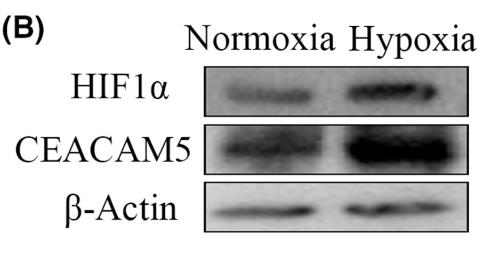
Fig1. Western blot indicated that the protein level of CEACAM5 exhibited an elevation concurrent with HIF1α under hypoxic conditions.
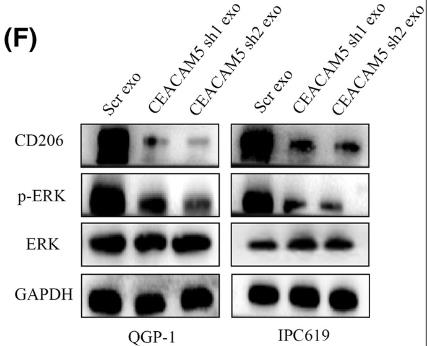
Fig2. The protein expression of CD206 and p-ERK was downregulated upon coculture of THP-1 cells with CEACAM5 knockdown pNETs cell exosomes.
Case 2: Saini S, et al. Sci Rep. 2024
Neuroendocrine prostate cancer (NEPC) is a highly lethal variant of castration-resistant prostate cancer (CRPC) with poor survival rates. Current treatment options for NEPC are limited to highly toxic platinum drugs highlighting the urgent need for new therapies. This study aimed to develop a novel therapeutic approach using engineered exosomes against NEPC. Exosomes were modified to target CEACAM5, an NEPC surface antigen, by attaching CEACAM5 antibodies to HEK293T exosomes. These exosomes were loaded with drugs inhibiting EZH2 and the androgen receptor (AR) as recent research shows a persistent role of AR in NEPC wherein it plays a concerted role with EZH2 in driving neuronal gene programs. In vitro experiments with NEPC cell lines demonstrated that CEACAM5-targeted exosomes were specifically taken up by NEPC cells, leading to reduced cellular viability and decreased expression of neuronal markers.
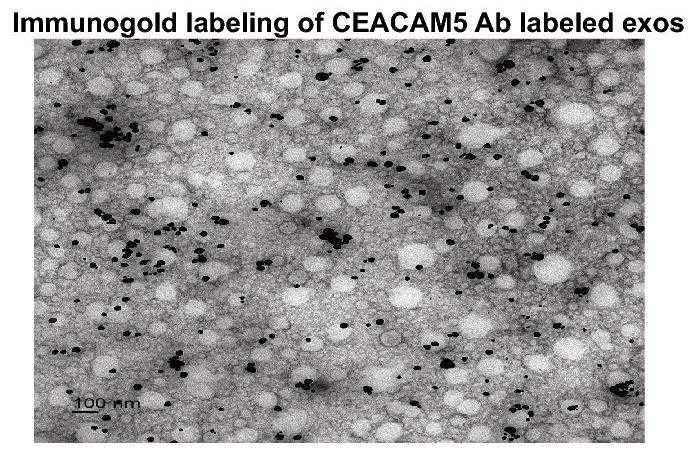
Fig1. CEACAM5 Ab labeled exosomes were visualized by immunogold labeling.
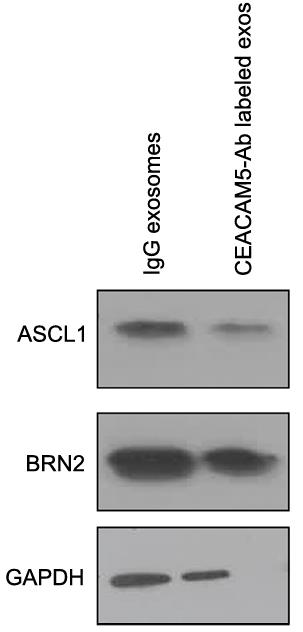
Fig2. Therapeutic CEACAM5-targeted exosomes reduce neuronal gene expression in NCI-H660 cells.
The protein CEACAM5 (also known as CEA or CD66e), a member of the CEACAM family, is overexpressed in a variety of cancers and is associated with tumor adhesion and invasion. The following are the application areas of CEACAM5:
1. Disease treatment. CEACAM5 serves as a target for ADCs (antibody-drug couplers) such as Tusamitamab Ravtansine, a drug conjured by the humanized monoclonal antibody SAR408377 and DM4 via a cleavable linker.
2. Disease diagnosis and drug development. CEACAM5 is a new target for drug development, and several therapies targeting CEACAM5 are already in preclinical or clinical stages, including monoclonal antibodies, ADCs, bisspecific antibodies, and CAR-T therapies. CEACAM5 can be used as a tumor marker for cancer diagnosis, monitoring and prognosis assessment, especially in colorectal cancer.
3. Other basic research. Cancer imaging using novel antibodies against CEACAM5, such as near-infrared fluorescence imaging for mouse models of pancreatic cancer. Ceacam5-targeted drugs are undergoing clinical trials to evaluate their safety and effectiveness in treating specific cancers.
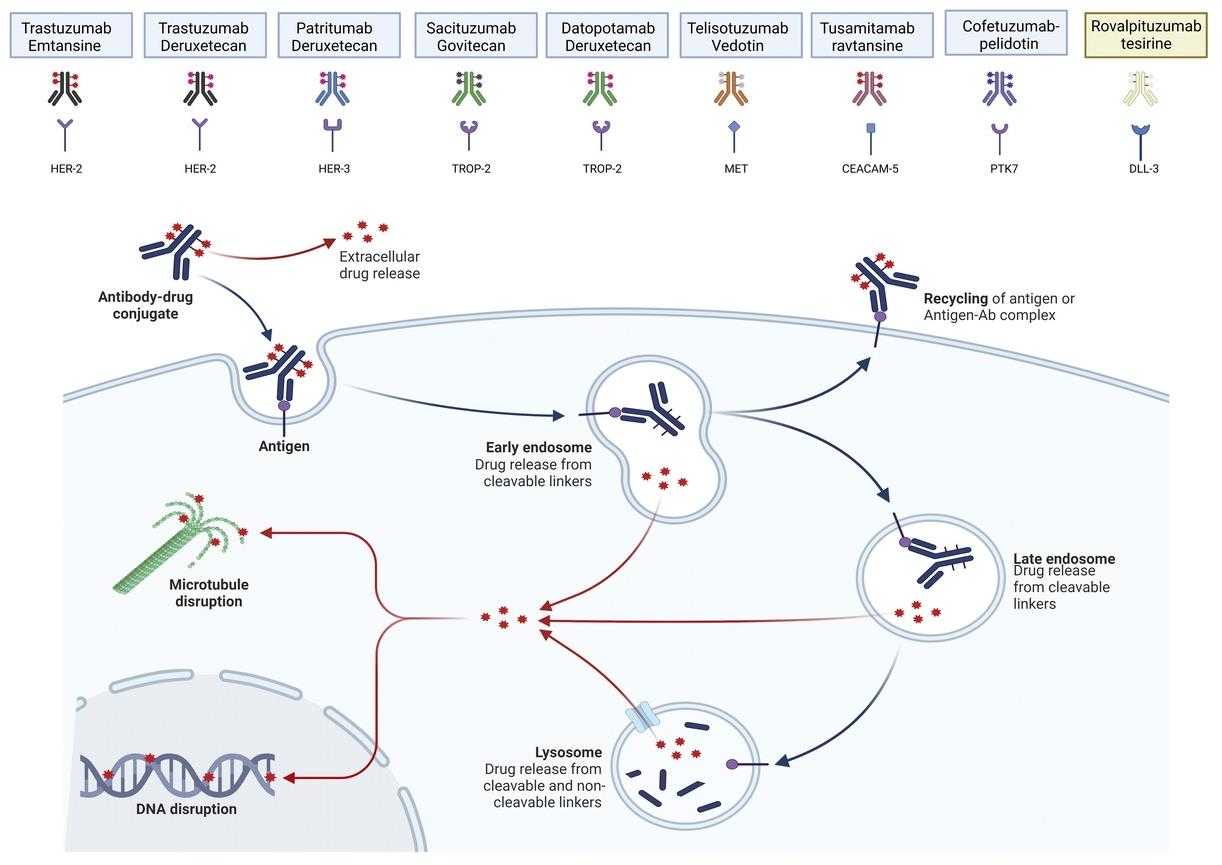
Fig1. Antibody-drug conjugate's mechanism of action. (Geoffrey Merle, 2022)
Not For Human Consumption!
Inquiry
- Reviews
- Q&As
Ask a Question for All CEACAM5 Products
Required fields are marked with *
My Review for All CEACAM5 Products
Required fields are marked with *
Inquiry Basket


